Your cart is currently empty!
Month: July 2024
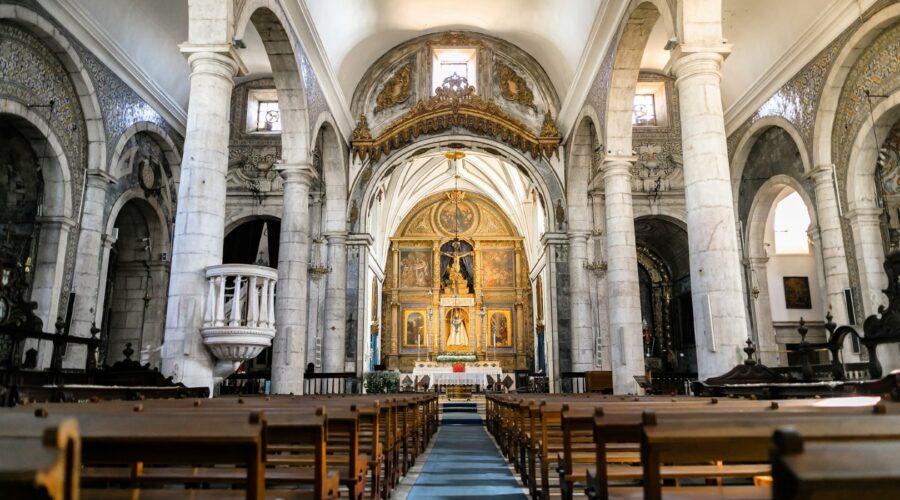
North Point Community Church: A Comprehensive Guide to Its Beliefs, Mission, and Impact
Introduction
North Point Community Church (NPCC) is a multi-site, evangelical megachurch with its main campus located in Alpharetta, Georgia, United States. Founded in 1995 by Pastors Andy and Jamie Stanley, NPCC has become one of the largest and most influential churches in the world, known for its innovative worship experiences, relevant teachings, and extensive community outreach programs.
Core Beliefs
- The Bible is the inspired and inerrant Word of God.
- There is one God who exists in three persons: Father, Son, and Holy Spirit.
- Jesus Christ is the Son of God who came to earth, lived a perfect life, died on the cross for our sins, and rose from the dead.
- All people are sinners and are in need of God’s grace.
- Salvation is a free gift from God that is received through faith in Jesus Christ.
Mission and Values
- Mission: “To lead people into a growing relationship with Jesus Christ.”
- Values:
- Love: Treating others with care and compassion.
- Excellence: Striving for the highest quality in all that we do.
- Humility: Recognizing our own limitations and the greatness of God.
- Innovation: Seeking new and creative ways to share the gospel.
- Community: Building relationships and supporting one another in our faith journey.
Worship Services
NPCC is known for its dynamic and engaging worship services that feature contemporary music, multimedia presentations, and inspiring messages. Worship is central to the church’s life and includes elements such as:
- Live band and vocalists
- Multimedia projections and videos
- Interactive elements involving the congregation
- Thought-provoking and relevant messages
Small Groups
Small groups are a vital part of NPCC and provide opportunities for members to connect with others, build relationships, and grow in their faith. Small groups meet in homes, coffee shops, and other settings throughout the week and typically focus on a specific topic or Bible study.
Outreach and Ministries
NPCC is actively involved in local, national, and international outreach programs. The church supports a wide range of ministries, including:
- Local Outreach: Food pantries, homeless shelters, disaster relief
- National Outreach: Partnerships with organizations such as Compassion International and Prison Fellowship
- International Outreach: Mission trips, clean water initiatives, medical clinics
Locations and Campuses
NPCC has multiple campuses throughout the United States and Canada. The main campus in Alpharetta, Georgia, has a capacity of over 10,000 members. Other campuses include:
- Athens, Georgia
- Atlanta, Georgia (Brookhaven, Decatur, Midtown)
- Augusta, Georgia
- Branson, Missouri
- Charlotte, North Carolina
- Cleveland, Ohio
- Chantilly, Virginia
- Chicago, Illinois
- Colorado Springs, Colorado
- Columbia, South Carolina
- Detroit, Michigan
- Duluth, Georgia
- Gainesville, Georgia
- Indianapolis, Indiana
- Jacksonville, Florida
- Kansas City, Missouri
- Knoxville, Tennessee
- Las Vegas, Nevada
- Lexington, Kentucky
- Macon, Georgia
- Madison, Wisconsin
- Miami, Florida
- Milwaukee, Wisconsin
- Minneapolis, Minnesota
- Nashville, Tennessee
- New Orleans, Louisiana
- New York City, New York
- Orlando, Florida
- Panama City Beach, Florida
- Philadelphia, Pennsylvania
- Phoenix, Arizona
- Pittsburgh, Pennsylvania
- Raleigh, North Carolina
- Richmond, Virginia
- Rochester, New York
- Sacramento, California
- Salt Lake City, Utah
- San Antonio, Texas
- San Diego, California
- San Francisco, California
- Savannah, Georgia
- Scottsdale, Arizona
- Seattle, Washington
- St. Louis, Missouri
- Tampa, Florida
- Toronto, Canada
- Tulsa, Oklahoma
- Tucson, Arizona
- Washington, D.C.
- West Palm Beach, Florida
Leadership and Pastors
NPCC is led by a team of pastors, including:
- Andy Stanley: Senior Pastor
- Jamie Stanley: Co-Founder and Associate Pastor
- Erik Reed: Executive Pastor
- Cara Stanley: Female Pastor
- Judah Smith: Young Adults Pastor
- Caroline Stanley: College and Career Pastor
Impact and Controversies
NPCC has had a significant impact on the Christian community and society as a whole. The church has been praised for its innovative approach to worship, its commitment to outreach, and its practical and relevant teachings.
However, NPCC has also faced criticism and controversies over the years. Some critics have accused the church of being too focused on growth and celebrity, while others have questioned some of its theological positions.
Becoming a Member
To become a member of NPCC, individuals must make a public declaration of faith in Jesus Christ and be baptized by immersion. Membership also includes attending new member orientation classes and serving in a local ministry.
Conclusion
North Point Community Church is a vibrant and influential megachurch that has played a significant role in the Christian landscape. With its innovative worship experiences, relevant teachings, and extensive outreach programs, NPCC continues to reach people with the gospel and make a positive impact on the world.
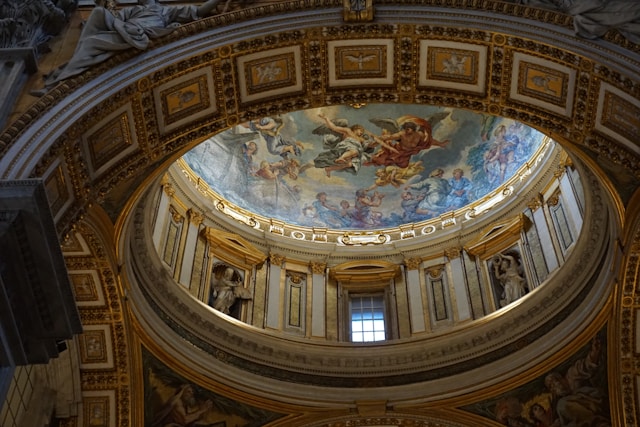
Delving into Today’s Readings in the Catholic Church: A Comprehensive Guide
Introduction
The Catholic Church places great importance on the daily reading and reflection upon the Word of God. Today’s readings, whether they are from the Old Testament, New Testament, or Psalms, offer a wealth of spiritual nourishment that guide and inspire our daily lives.
The Liturgy of the Word
The Liturgy of the Word forms an integral part of the Catholic Mass. It comprises four main elements:
1. Opening Prayer
The Liturgy of the Word begins with the opening prayer, where we invoke the Holy Spirit to open our hearts and minds to receive the Word of God.
2. First Reading
The first reading is typically selected from the Old Testament. It prepares us for the Gospel by revealing the story of salvation and God’s relationship with His people.
3. Responsorial Psalm
The responsorial psalm is a reflection on the first reading. It allows us to respond to the Word of God through prayer and song.
4. Second Reading
The second reading is usually taken from one of the New Testament epistles. It often provides a deeper understanding of the Gospel and applies its teachings to our lives.
5. Gospel Acclamation
Before the Gospel reading, we sing or recite the Alleluia or Gospel Acclamation, expressing our joy and readiness to hear the Good News.
6. Gospel Reading
The Gospel reading is the highlight of the Liturgy of the Word. It is an account of Jesus’ life, teachings, and actions. It challenges us to live out our faith in response to God’s love and mercy.
Daily Mass Readings
The Catholic Church assigns specific readings for each day of the liturgical year. These readings follow a three-year cycle, ensuring that we encounter a wide range of biblical texts over time. The daily readings are available in liturgical calendars or online resources.
Meditating on Today’s Readings
To fully benefit from today’s readings, it is important to approach them with a prayerful and reflective attitude:
1. Prayerful Reading
Begin by invoking the Holy Spirit and asking for guidance in understanding the Word of God. Read the scriptures slowly and thoughtfully, paying attention to both the literal meaning and the underlying message.
2. Reflection
Take time to reflect on the meaning of the readings and how they apply to your own life. Ask yourself:
- What does God want me to hear in this reading?
- How does this reading challenge or inspire me?
- What practical steps can I take to live out this Word in my life?
3. Journaling or Discussion
Consider writing down your reflections in a journal or discussing them with a spiritual director or fellow believer. This helps deepen your understanding and internalizes the Word.
Living the Word
The ultimate goal of reading today’s readings is not only to understand them but also to live them out:
1. Applying the Word
Identify specific actions or changes you can make in your life based on the insights gained from the readings. These could be related to your prayer life, service to others, or moral decision-making.
2. Daily Prayer
Incorporate the Word of God into your daily prayers. Use the readings as a source of inspiration for your petitions, thanksgivings, and intercessions.
3. Witnessing to the Word
Share your experiences of reading and meditating on the Word of God with others. By doing so, you not only proclaim the Gospel but also encourage others to encounter the transformative power of God’s Word.
Additional Resources
- Liturgy of the Word (Catholic Encyclopedia)
- Daily Readings and Reflections (USCCB)
- Liturgy of the Word Resources (Loyola Press)
Conclusion
Today’s readings in the Catholic Church are a precious gift from God. By approaching them with a prayerful and reflective attitude, we can encounter the living Word of God, which challenges us, inspires us, and guides us on our journey of faith. May we always seek to live out the Word in our lives, becoming instruments of God’s love and grace in the world.
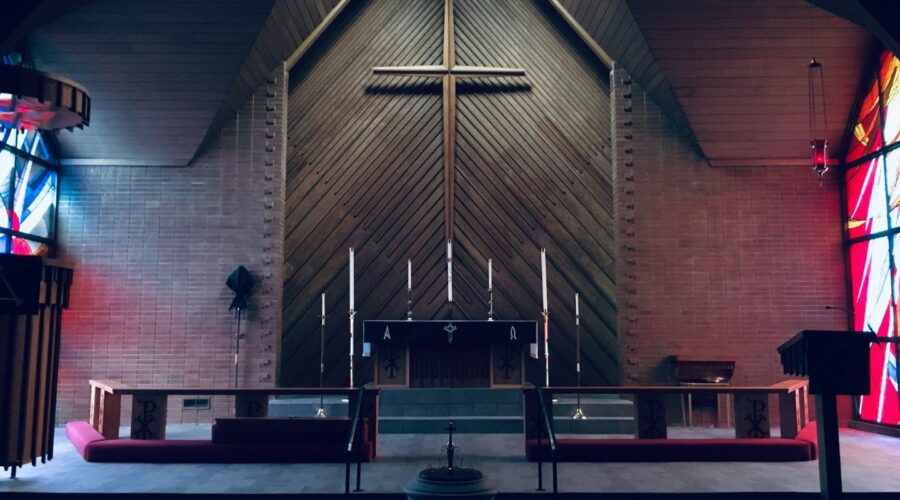
Discover the Enriching World of Scapular Catholicism: A Comprehensive Guide
Introduction
Delve into the captivating realm of Scapular Catholicism and uncover its profound historical roots, enriching spiritual practices, and profound connection to the Catholic faith. This comprehensive guide will illuminate the significance of this ancient devotion, exploring its origins, symbolism, and the transformative impact it holds for practitioners.
Origins and History
The Birth of the Scapular
The scapular originated in the 13th century, attributed to a vision received by Saint Simon Stock, a Carmelite friar. In the vision, the Blessed Virgin Mary bestowed upon him a brown woolen scapular, promising protection and salvation to those who wore it.
Spread of the Devotion
Over the centuries, the scapular gained widespread popularity among Catholics, particularly members of the Carmelite Order. Its association with the Virgin Mary and its perceived protective powers made it a cherished symbol of faith and devotion.
Symbolism and Meaning
The Brown Badge of Mary
The brown scapular is a simple garment traditionally made of wool. Its color symbolizes the Carmelite Order’s dedication to the Blessed Virgin Mary, who is known as the “Lady of Mount Carmel.” The two pieces of cloth, connected by strings or ribbons, represent the yoke of Christ.
A Shield of Protection
The scapular is often referred to as a “shield of protection.” Catholics believe that wearing the scapular with faith and devotion invokes the intercession of the Virgin Mary and offers spiritual protection from harm and evil.
Types of Scapulars
Brown Scapular of Our Lady of Mount Carmel
The original brown scapular, bestowed upon Saint Simon Stock, is the most well-known and widely worn type. It is associated with the Carmelite Order and holds special significance for members of the Third Order of Carmel.
Other Scapulars
In addition to the Brown Scapular, there are numerous other scapulars recognized by the Catholic Church, each with its own unique symbolism and spiritual significance.
Receiving and Wearing the Scapular
Enrollment and Blessing
To fully embrace the benefits of the scapular, it must be received and blessed by a priest or deacon. The enrollment ceremony involves a special prayer and the placing of the scapular on the individual’s shoulders.
Daily Wearing
The scapular should be worn daily as a reminder of one’s commitment to faith and the protection of the Virgin Mary. It should be kept close to the body, either under or over clothing.
Spiritual Practices with Scapulars
Devotional Prayers
Specific prayers are associated with scapulars, such as the Brown Scapular Prayer. Regular recitation of these prayers reinforces the spiritual connection and devotion to the Blessed Virgin Mary.
Scapuled Communities
Many Catholic communities and organizations offer Scapuled Groups or Confraternities where members gather for prayer, spiritual formation, and fellowship centered around the scapular devotion.
Benefits and Promises
Spiritual Protection and Grace
The scapular is believed to offer protection from physical harm, temptations, and spiritual attacks. It is also seen as a source of grace, assisting in the journey of faith and salvation.
Promises of Mary
According to tradition, the Blessed Virgin Mary made promises to those who wear the scapular with faith and devotion:
- They will not die without receiving the sacraments.
- They will not suffer eternal damnation.
- They will be assisted by the Virgin Mary in Purgatory.
Frequently Asked Questions
Here are answers to some common questions about scapulars:
- Can I buy a scapular online? Yes, scapulars can be purchased from various online retailers and Catholic bookstores.
- Do I have to be a Catholic to wear a scapular? While the scapular is primarily associated with Catholicism, individuals from other Christian denominations may also wear it as a symbol of devotion to the Virgin Mary.
- Can I lose the benefits of the scapular if I remove it? No, the blessings and promises associated with the scapular remain as long as you have received it and continue to wear it with devotion.
Conclusion
The Scapular Catholic devotion offers a profound and enriching connection to the Catholic faith. Its origins, symbolism, and spiritual practices invite the faithful to embrace the protection and guidance of the Blessed Virgin Mary throughout their lives. By understanding and embracing the significance of the scapular, Catholics can deepen their spirituality and journey towards salvation.
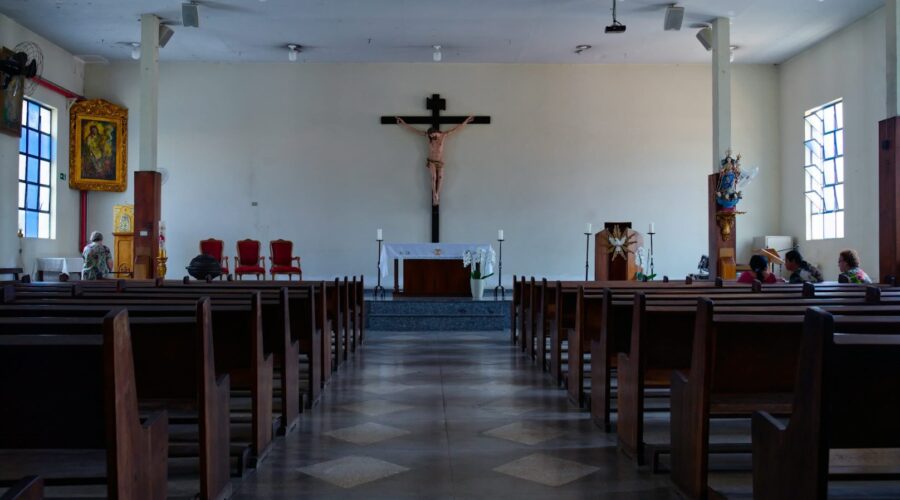
Grace: Unmerited Favor in the Bible
Introduction
Grace is a central theme throughout the Bible, representing God’s unmerited favor and transformative power in our lives. It encompasses God’s love, mercy, forgiveness, and enabling strength, empowering us to live in accordance with His will.
What is Grace?
Definition
Grace is the free and undeserved favor that God bestows upon individuals, not based on their merit or works, but out of His infinite love and kindness.
Types of Grace
- Saving Grace: The grace that brings salvation, enabling us to turn from sin and receive forgiveness and eternal life.
- Sustaining Grace: The grace that empowers us to live a Christian life, overcoming challenges and growing in faith.
- Common Grace: The grace that God extends to all people, regardless of their beliefs, providing blessings such as rain, food, and protection.
Grace in the Old Testament
The concept of grace is evident throughout the Old Testament:
Covenantal Grace
God established covenants with His people, promising to bless and guide them if they remained faithful. This grace was not based on their perfect obedience but on God’s faithfulness and desire for a relationship.
Election Grace
God chose and called specific individuals, such as Abraham and Moses, to be His servants and leaders. This grace was a demonstration of God’s sovereign power and His grace to reveal Himself to particular people.
Grace in the New Testament
Jesus Christ: The Embodiment of Grace
Jesus Christ is the ultimate revelation of God’s grace. Through His life, death, and resurrection, He offered salvation to all who believe in Him.
Justification by Faith
The New Testament emphasizes that we are justified, or declared righteous, by faith in Christ’s sacrifice. This grace is not earned but received through our trust in God’s redemptive work.
Grace and Transformation
Grace empowers us to live a transformed life, free from the bondage of sin. It enables us to produce fruits of the Spirit, such as love, joy, peace, and self-control.
Living in Grace
Benefits of Grace
Grace brings numerous benefits, including:
- Salvation and forgiveness
- Transformation and growth
- Peace and assurance
- Strength and guidance
Tips for Living in Grace
- Receive God’s Grace: Believe in the gospel and accept Jesus Christ as your Savior, receiving His grace through faith.
- Embrace Your Identity: Understand that you are accepted and loved by God, despite your imperfections, due to His grace.
- Practice Forgiveness: Extend grace to others as God has extended grace to you.
- Walk in the Spirit: Allow the Holy Spirit to guide you and empower you to live in accordance with God’s grace.
- Be Grateful: Express gratitude to God for His grace and seek to live a life that glorifies Him.
Conclusion
Grace is the foundation of our relationship with God and empowers us to live a God-honoring life. By receiving God’s grace through faith in Jesus Christ, we are transformed, forgiven, and guided into a fulfilling and abundant life. May we embrace the grace that God offers us and strive to live in its fullness.
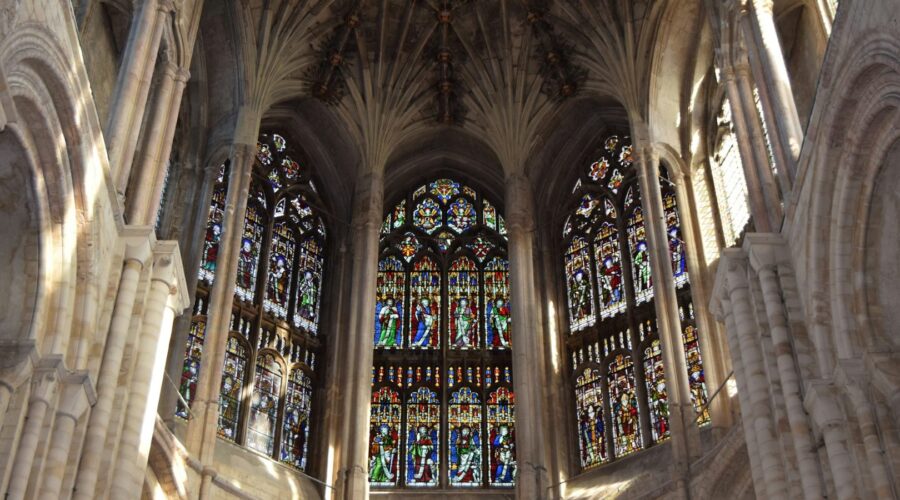
Unveiling the History, Beliefs, and Impact of Central Baptist Church
A Legacy of Faith and Service
Central Baptist Church stands as a beacon of faith and community in the heart of the city. Its rich history, unwavering beliefs, and multifaceted impact have made it a cornerstone for countless lives over the years.
Founding and Early Years (1885-1900)
Central Baptist Church was founded in 1885 by a group of devout Baptists who sought to establish a spiritual home for themselves and their families. The church’s first building was a modest structure located on the outskirts of town.
Growth and Expansion (1900-1950)
As the city grew, so did Central Baptist Church. Under the leadership of several gifted pastors, the church expanded its building, increased its congregation, and established a strong presence in the community.
Modern Era (1950-Present)
The mid-20th century marked a period of change and progress for Central Baptist Church. The church embraced modern technology, updated its facilities, and became more involved in social activism and outreach.
Core Beliefs
Central Baptist Church adheres to the following core beliefs:
- The Bible is the inspired word of God and the sole authority for faith and practice.
- God is a Trinity: Father, Son, and Holy Spirit.
- Jesus Christ is the only way of salvation through his death and resurrection.
- All people are created in the image of God and deserve respect and compassion.
- The Church is a community of believers called to love and serve others.
Impact on the Community
Central Baptist Church has made a significant impact on the surrounding community:
Worship and Spiritual Growth
The church offers a variety of worship services, Bible studies, and prayer groups to foster spiritual growth.
Education and Discipleship
Central Baptist Church has a renowned Sunday School program, youth groups, and adult discipleship classes.
Social Outreach and Service
The church volunteers engage in various outreach ministries, including soup kitchens, shelters, and disaster relief efforts.
Arts and Culture
Central Baptist Church hosts musical concerts, art exhibitions, and dramatic performances.
Programs and Activities
Central Baptist Church offers a wide range of programs and activities for all ages and interests:
Age Group Programs Children – Sunday School
– VBS
– Children’s ChoirYouth – Youth Group
– Mission Trips
– Sports TeamsAdults – Bible Studies
– Prayer Groups
– Small GroupsSenior Adults – Senior Group
– Retirement Fellowship
– Nursing Home VisitsLeadership and Staff
Central Baptist Church is led by a team of dedicated pastors, elders, and deacons who oversee the church’s spiritual, administrative, and financial affairs.
Pastors
- Senior Pastor: Rev. John Smith
- Associate Pastor: Rev. Jane Johnson
Elders
- Chairman: David Miller
- Vice-Chairman: Susan Brown
- Members: Michael Jones, Sarah Williams, Robert Green
Deacons
- Chairman: Tom Carter
- Vice-Chairman: Mary Wilson
- Members: John Lee, Anne Davis, Steve Carter
How to Get Involved
If you are interested in becoming a part of Central Baptist Church, there are many ways to get involved:
Conclusion
Central Baptist Church continues to stand as a beacon of faith, hope, and love in the community. Through its unwavering beliefs, dynamic programs, and compassionate outreach, the church transforms lives and makes a lasting impact.
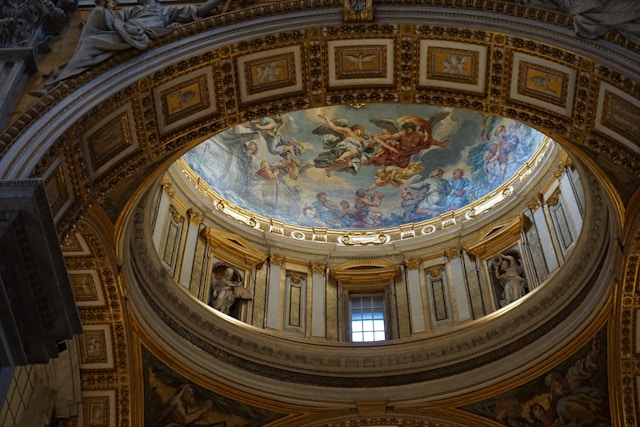
Immerse in Spiritual Growth and Fun: VBS 2022
What is VBS?
Vacation Bible School (VBS) is an annual summer program designed for children and youth, typically held in churches, community centers, or other venues. VBS offers a unique combination of biblical teachings, creative activities, games, music, and fellowship, providing a fun and engaging way to learn about God and build a strong Christian foundation.
VBS 2022: A Journey of Faith and Adventure
This year’s VBS promises to be an unforgettable experience, with an exciting theme, engaging activities, and a transformative message. Here’s an overview of what you can expect at VBS 2022:
Theme:
The theme of VBS 2022 centers on a compelling biblical story or a key principle of Christian faith. It will guide the week’s activities and teachings, helping children and youth connect with God on a deeper level.
Activities: Creativity, Games, and Fun
VBS offers a wide array of activities tailored to different ages and interests. Arts and crafts, science experiments, sports, and outdoor games are just a few examples of the engaging activities that will keep participants entertained and learning.
Music and Worship: Praising God with Joy
Music plays a vital role in VBS, fostering a spirit of worship and praise among children and youth. VBS features catchy songs, uplifting Bible verses set to music, and even live worship sessions that create a lively and joyful atmosphere.
Bible Teachings: Encountering God’s Word
At the heart of VBS is the exploration of God’s Word. Through age-appropriate Bible lessons, children and youth will have the opportunity to learn about the love of God, the teachings of Jesus Christ, and the principles of Christian living.
Benefits of Attending VBS 2022
VBS offers numerous benefits for children and youth, including:
Spiritual Growth: Laying a Strong Christian Foundation
VBS provides a nurturing environment where children and youth can develop their faith, learn about God’s character, and apply Christian principles to their daily lives. By engaging with the Bible and participating in group discussions, they will gain a deeper understanding of God’s love and purpose for their lives.
Friendship and Community: Building Lasting Bonds
VBS fosters a strong sense of community among participants. They will have the opportunity to interact with peers, make new friends, and build lasting relationships based on shared faith and values. The group activities and team-building exercises will promote teamwork, cooperation, and a sense of belonging.
Fun and Joy: Creating Unforgettable Memories
VBS is not just about learning and growing; it’s also about having fun and creating cherished memories. The variety of activities, games, and social interactions will provide a memorable and enjoyable summer experience for children and youth.
How to Participate in VBS 2022
To participate in VBS 2022, families can:
Contact Local Churches:
Reach out to churches in your area to inquire about their VBS programs. Churches typically offer VBS during the summer months, and registration information is usually available on their websites or through phone calls.
Online Registration:
Many churches offer online registration for VBS. Families can visit the church website, find the VBS page, and complete the registration form. This convenient option allows families to sign up for the desired time and date.
Additional Tips for Parents and Guardians
To enhance the VBS experience for children and youth, parents and guardians can:
Encourage Active Participation:
Encourage children and youth to participate fully in all activities, from Bible lessons to games and crafts. Active engagement will help them maximize their learning and enjoyment.
Discuss the Lessons:
Take time after VBS to discuss the Bible lessons and activities with children and youth. Ask questions, share perspectives, and help them apply the teachings to their own lives.
Make VBS a Priority:
Prioritize VBS attendance by ensuring that children and youth are available for all sessions. Regular attendance will provide a consistent and enriching experience.
Volunteer Support:
Consider volunteering at VBS. Sharing your time and talents will not only support the program but also allow you to connect with children and youth and witness their spiritual growth firsthand.
Conclusion
VBS 2022 promises to be an exceptional opportunity for children and youth to explore their faith, build friendships, and create lasting memories. By participating in VBS, they will not only have fun but also lay a strong foundation for their Christian journey. Encourage your children and youth to attend VBS and experience the transformative power of God’s love and guidance.
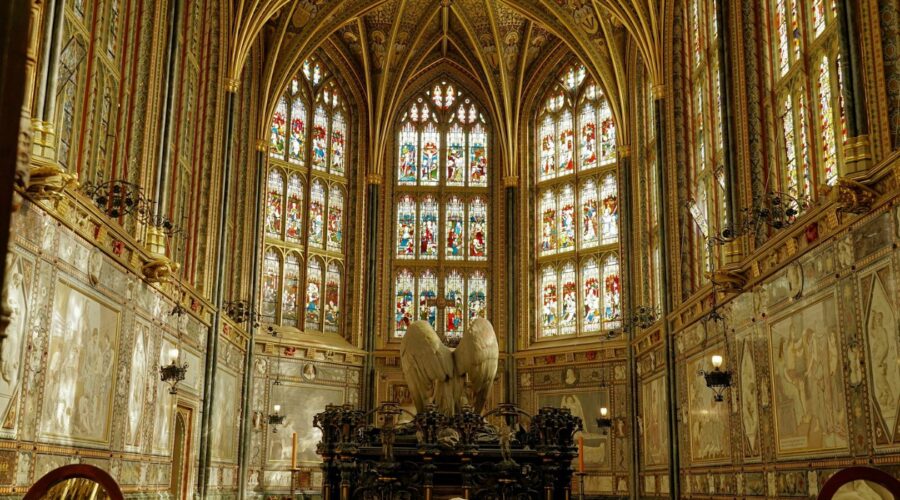
Discover the Enchanting Gaudí’s Sagrada Família: A Masterpiece of Gothic Revival and Symbol of Barcelona
Introduction
Standing tall and awe-inspiring in the heart of Barcelona, the Sagrada Família is a testament to the brilliant mind of architect Antoni Gaudí. This colossal basilica, still under construction, has captivated the world with its intricate architecture, vibrant colors, and profound symbolism. Join us on a journey into the fascinating realm of Gaudí’s masterpiece, uncovering its history, design, and enduring legacy.
A History of Divine Inspiration
The Sagrada Família began as a simple parish church in 1882, but Gaudí’s involvement in 1883 transformed it into a grandiose masterpiece. Inspired by his deep faith and love of nature, Gaudí dedicated his life to completing the basilica, envisioning it as a symbol of redemption and the triumph of spirituality.
The Architectural Genius of Gaudí
Gaudí’s unique blend of architectural styles, known as Catalan Modernism, is evident in every aspect of the Sagrada Família. He ingeniously combined elements of Gothic Revival, Art Nouveau, and organic forms to create a building that is both awe-inspiring and harmoniously integrated with its surroundings.
The Three Facades
- Nativity Facade (Eastern): This facade, completed in 1930, depicts the joyful scenes of Jesus’s birth, with intricate sculptures and mosaics showcasing the beauty of creation.
- Passion Facade (Western): Conceived but not completed by Gaudí, this facade represents Jesus’s suffering and crucifixion. Its angular and abstract sculptures reflect the intensity of Christ’s sacrifice.
- Glory Facade (Southern): Gaudí’s final and most ambitious design, the Glory Facade is still under construction. It symbolizes the glory of Christ and the eternal life in heaven.
Structural Innovations
- Hyperboloid Columns: Gaudí’s innovative use of hyperboloid columns allows for a lightweight and durable structure, creating a spacious and light-filled interior.
- Catenary Arches: Arches inspired by the inverted shape of a chain provide structural stability and create a sense of movement and dynamism.
- Stained Glass Windows: Vibrant and colorful stained glass windows flood the interior with natural light, creating a kaleidoscopic effect that transforms the atmosphere throughout the day.
The Symbolism of the Sagrada Família
Gaudí infused the Sagrada Família with profound symbolism, reflecting his religious beliefs and the spiritual journey of humanity. Every element, from the towering spires to the intricate details, holds a deeper meaning.
Nature and Creation
- Palm Trees: The cluster of columns on the facade resemble palm trees, symbolizing the strength and endurance of the Christian faith.
- Turtle and Snail: These animals represent the slow but steady progress of the basilica’s construction and the eternal cycle of life.
- Floral Motifs: Flowers and plants adorn the building, celebrating the beauty and diversity of God’s creation.
Spirituality and Redemption
Facade Symbolism Table Facade Symbolism Nativity Facade Life, hope, and joy Passion Facade Suffering, sacrifice, and repentance Glory Facade Resurrection, eternal life, and union with God Gaudí’s Enduring Legacy
Antoni Gaudí dedicated his life to the Sagrada Família, and even after his tragic death in 1926, the construction continued under the guidance of talented architects. The basilica has become an iconic symbol of Barcelona, attracting millions of visitors each year. Gaudí’s architectural genius and unwavering faith continue to inspire and amaze people around the world.
Tips for a Visit
- Purchase Tickets in Advance: Tickets are in high demand, especially during peak season. Book early to secure your spot.
- Allow Ample Time: Set aside at least 2-3 hours to fully explore the basilica and its surroundings.
- Climb the Towers: For a breathtaking panoramic view of Barcelona, ascend one of the towers (Nativity or Passion Facade).
- Audio Guide: Enhance your visit with an audio guide to learn about the history and symbolism of the Sagrada Família.
- Attend Mass: On Sundays and certain holidays, Mass is held in the Sagrada Família, offering a unique opportunity to experience its sacred atmosphere.
Conclusion
Gaudí’s Sagrada Família is a mesmerizing masterpiece that transcends architecture and embodies the spirit of a visionary artist. Its intricate design, profound symbolism, and enduring legacy make it a must-see destination for anyone visiting Barcelona. Whether you marvel at its towering spires, admire its intricate details, or simply soak in its sacred atmosphere, the Sagrada Família will leave an unforgettable imprint on your heart and soul.

Daily Catholic Mass Today: A Spiritual Journey
Introduction
The daily Catholic Mass is a central part of the Catholic faith, offering a unique opportunity for believers to connect with God and their community. It is a time for reflection, prayer, and deepening one’s relationship with the divine. In this blog post, we will delve into the significance, history, and benefits of the daily Catholic Mass, as well as provide practical guidance on how to participate and make it a meaningful experience.
History of the Daily Mass
The origins of the daily Mass can be traced back to the early days of the Christian Church. In the first centuries after Christ, Christians gathered regularly for communal worship, including the celebration of the Eucharist. Over time, the practice of daily Mass became more widespread, particularly among monasteries and religious orders. By the 6th century, it was common practice for priests to offer Mass daily, even when there were no people present.
Significance of the Daily Mass
The daily Mass holds immense significance for Catholics for several reasons:
- Sacrament of the Eucharist: The Mass is the central act of Catholic worship, where believers receive the Body and Blood of Christ in the form of bread and wine. This sacrament is a powerful reminder of Jesus’ sacrifice and his presence among his people.
- Encounter with God: The Mass provides an opportunity for Catholics to encounter God in a personal and intimate way. Through the readings, prayers, and reception of the Eucharist, believers can deepen their relationship with the divine.
- Community Gathering: The daily Mass serves as a gathering point for the Catholic community. It fosters a sense of unity and belonging, as people come together to share in the same faith experience.
- Intercessory Prayer: The Mass includes prayers for the living and the dead, offering Catholics the opportunity to intercede for loved ones and the needs of the world.
Benefits of Attending Daily Mass
Attending daily Mass offers numerous spiritual benefits:
- Increased Faith: Regular attendance at Mass strengthens one’s faith by deepening their understanding of the teachings of Jesus and the Catholic Church.
- Spiritual Growth: The Mass nourishes the soul, providing opportunities for reflection, contemplation, and increased closeness to God.
- Grace: Receiving the Eucharist at Mass imparts God’s grace, which empowers believers to live a holy and virtuous life.
- Peace and Fulfillment: The Mass can bring a sense of inner peace, tranquility, and fulfillment, helping to center Catholics in their daily lives.
How to Participate in the Daily Mass
Participating in the daily Mass is a relatively simple process:
- Find a Mass Time: Check your local parish website or call the parish office to find out the times of daily Masses.
- Arrive Early: Arrive at the church a few minutes before Mass starts to prepare yourself spiritually and settle into the space.
- Dress Appropriately: While there are no strict dress codes, it is customary to dress modestly and respectfully for Mass.
- Follow Along: Use a missal (the book with the Mass prayers) to follow along with the readings, prayers, and responses.
- Receive Communion: If you are baptized and have received your First Communion, you are encouraged to receive the Eucharist during Mass.
Tips for Making the Daily Mass Meaningful
Here are some tips to help you make the daily Mass more meaningful:
- Prepare in Advance: Take a few minutes before Mass to reflect on your day, your intentions, and your relationship with God.
- Be Present: Put away distractions and focus on the Mass experience. Engage with the readings, prayers, and music.
- Listen Attentively: Pay attention to the homily and the readings. Use this time to learn and reflect on the teachings of the Church.
- Pray with Intention: Offer your prayers for yourself, your loved ones, and the needs of the world.
- Take Time After Mass: Spend a few minutes after Mass reflecting on what you have experienced. Journal your thoughts or simply sit in quiet contemplation.
Conclusion
The daily Catholic Mass is a cherished part of the Catholic faith. It offers believers an opportunity to receive the Eucharist, encounter God, grow spiritually, and unite with their community. By attending daily Mass, Catholics can deepen their relationship with the divine, strengthen their faith, and find peace and fulfillment in their lives.
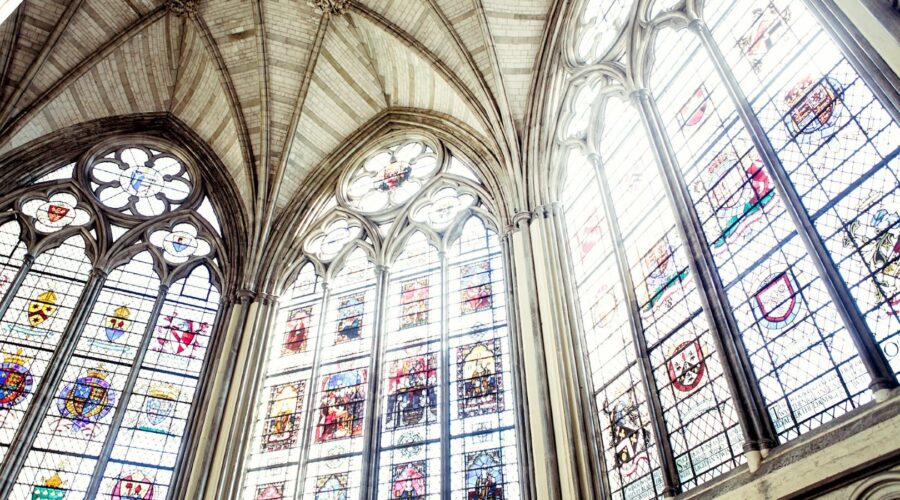
Unlock the Secrets of Venture Churches: Engaging the Modern Worshipers
What is a Venture Church?
Venture churches are a unique breed of religious congregations that are redefining the traditional church model. With a focus on cutting-edge worship experiences, innovative outreach programs, and a commitment to social justice, venture churches seek to connect with the hearts and minds of a generation that is increasingly seeking spiritual fulfillment outside of conventional religious institutions.
Key Characteristics of Venture Churches
Dynamic Worship Experiences
Venture churches place great emphasis on creating worship experiences that resonate with the sensibilities of modern worshipers. Contemporary music, multimedia elements, and interactive sermons are common features of these gatherings, which aim to engage both the head and the heart.
Innovative Outreach Programs
Recognizing the need to connect with their communities beyond Sunday services, venture churches invest in outreach programs that address the pressing social issues of their time. Food banks, community service projects, and support groups are just a few examples of how these churches seek to make a tangible difference in the lives of those around them.
Commitment to Social Justice
Venture churches often embrace a progressive approach to social justice. They advocate for marginalized communities, engage in interfaith dialogue, and use their platforms to raise awareness about important social issues. This commitment stems from a belief that faith should not be confined to Sunday mornings but should permeate every aspect of one’s life.
Benefits of Attending a Venture Church
1. A Sense of Belonging
Venture churches cultivate a welcoming and inclusive environment where individuals from all backgrounds feel valued and connected. Small group gatherings, mentorship programs, and community events provide ample opportunities for members to build genuine relationships with one another.
2. Spiritual Fulfillment
Through dynamic worship experiences and thought-provoking sermons, venture churches provide a transformative spiritual environment. They encourage personal growth, challenge conventional wisdom, and offer a fresh perspective on faith that resonates with modern worshipers.
3. Social Impact
By participating in outreach programs and social justice initiatives, venture church members make a meaningful contribution to their communities. They have the opportunity to live out their faith by serving others and working towards a more just and equitable society.
How to Find a Venture Church
If you are seeking a spiritual community that is in tune with your values and aspirations, here are some tips to find a venture church near you:
- Use online directories such as Churchome and Seeker to search for venture churches in your area.
- Attend conferences and events organized by venture church networks such as The Velocity Network and Emergent Village.
- Read books and articles by influential venture church leaders to gain insights into their vision and approach.
Examples of Successful Venture Churches
Church Location Founded Vision Catalyst Church Scottsdale, AZ 1994 To be a place where people find and follow Jesus. Elevation Church Charlotte, NC 2006 To see people live life transformed by the gospel of Jesus Christ. Hillsong Church Sydney, Australia 1983 To inspire people to love God and love people. Conclusion
Venture churches are a vibrant and growing movement that is revolutionizing the way people experience faith in the 21st century. By embracing innovation, inclusivity, and a commitment to social justice, these churches provide a welcoming and transformative spiritual environment for modern worshipers. If you are seeking a faith community that aligns with your values and aspirations, consider exploring the world of venture churches.
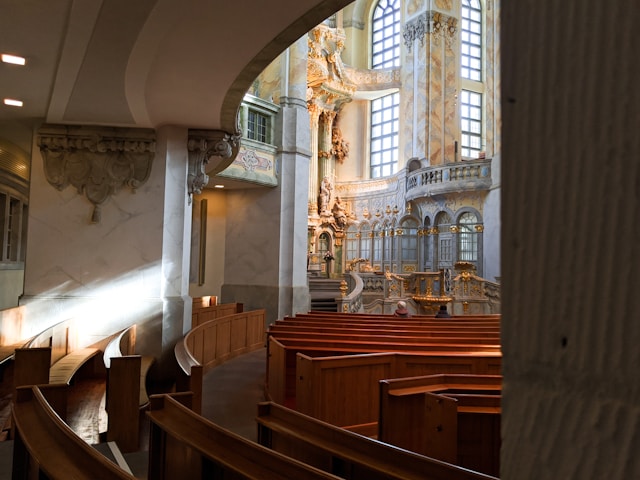
Basilica of the National Shrine: A Haven of Faith and Architecture
Introduction
Nestled in the heart of Washington, D.C., the Basilica of the National Shrine of the Immaculate Conception stands as a testament to the devotion and architectural brilliance of the 20th century. As the largest Catholic church in North America and one of the largest in the world, the Basilica draws millions of pilgrims and visitors annually, offering a sanctuary for spiritual reflection and an awe-inspiring glimpse into the grandeur of human achievement.
In this comprehensive guide, we delve into the rich history, architectural wonders, and spiritual significance of the Basilica of the National Shrine, providing an insider’s perspective into this hallowed space.
History
Conception and Construction
The idea for a national shrine dedicated to the Immaculate Conception was conceived in 1846, but it wasn’t until 1913 that Archbishop James Cardinal Gibbons formally established the project. Construction began in 1920 and continued for over 80 years, with the Upper Church finally completed and dedicated in 1959.
Architectural Style
The Basilica is a masterpiece of Byzantine-Romanesque architecture, known for its soaring arches, intricate mosaics, and opulent ornamentation. The exterior is adorned with a series of domes and towers, while the interior boasts vast marble halls, towering ceilings, and a stunning mosaic canopy over the High Altar.
Spiritual Significance
Dedication to the Immaculate Conception
As its name suggests, the Basilica is dedicated to the Immaculate Conception of the Virgin Mary, a fundamental doctrine of the Catholic Church that holds that Mary was conceived without original sin.
Pilgrimage and Devotion
The Basilica is a major pilgrimage site, attracting visitors from around the world who seek spiritual renewal and devotion. It houses numerous chapels dedicated to saints and national figures, providing a space for quiet reflection and prayer.
Architectural Features
Upper Church
The Upper Church is the largest and most impressive part of the Basilica, spanning over 500 feet in length and 250 feet in width. Its vast interior can accommodate up to 10,000 people.
Mosaics
The Basilica’s walls and ceilings are adorned with over 100 million pieces of mosaic tiles, depicting scenes from the Bible, the life of Christ, and the saints.
Crypts
Beneath the Upper Church are two levels of crypts, where over 10,000 individuals are buried, including prominent Catholics, clergy, and military personnel.
Visitor Information
Hours of Operation
The Basilica is open daily to visitors from 7:00 am to 7:00 pm.
Guided Tours
Guided tours are available and highly recommended to fully appreciate the Basilica’s history and architectural grandeur.
Admission
Admission to the Basilica is free of charge.
Conclusion
The Basilica of the National Shrine is a sacred and awe-inspiring place that embodies the faith, artistry, and architectural excellence of the modern era. Its rich history, stunning features, and spiritual significance make it a must-see destination for pilgrims, tourists, and anyone seeking a deeper connection to their faith or a breathtaking glimpse into the wonders of human achievement.
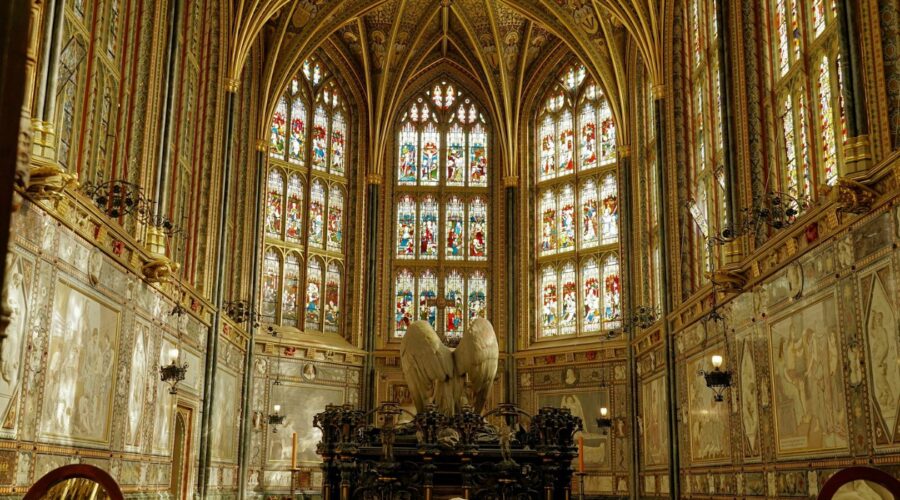
Grace Presbyterian Church: A Place of Grace, Growth, and Service
“`html
Grace Presbyterian Church is a vibrant and welcoming community of faith located in the heart of the city. We are a congregation of all ages, backgrounds, and walks of life, united by our shared belief in the saving grace of Jesus Christ.
Our Mission
Our mission is to glorify God by:
- Proclaiming the gospel of Jesus Christ
- Making disciples
- Nurturing spiritual growth
- Serving our community and the world
Our Beliefs
We believe that the Bible is the inspired and authoritative Word of God, and that it is the foundation for our faith and practice. We believe in the Trinity: God the Father, God the Son (Jesus Christ), and God the Holy Spirit.
We believe that all people are sinful and in need of a savior. We believe that Jesus Christ died on the cross to pay the penalty for our sins, and that through faith in him we can receive forgiveness and eternal life.
Our Worship Services
We offer two worship services each Sunday, at 9:00am and 11:00am. Our services are traditional in style, with a focus on the preaching of the Word and the celebration of the sacraments.
Our Ministries
We offer a wide variety of ministries for people of all ages, including:
- Sunday school for children and adults
- Youth group
- Women’s ministry
- Men’s ministry
- Small groups
- Missions outreach
Our Community Involvement
We are committed to serving our community and the world. We partner with local organizations to provide food, clothing, and shelter to those in need. We also support missionaries around the world who are sharing the gospel and making a difference in people’s lives.
How to Get Involved
If you are looking for a church home, we invite you to visit Grace Presbyterian Church. We would be delighted to have you join us for worship, fellowship, and service.
Here are some ways to get involved:
- Attend a worship service
- Join a Sunday school class or small group
- Serve in one of our ministries
- Support our missions outreach
Contact Us
For more information about Grace Presbyterian Church, please contact us at:
- Phone: (555) 123-4567
- Email: [email protected]
- Website: www.gracepres.org
“`
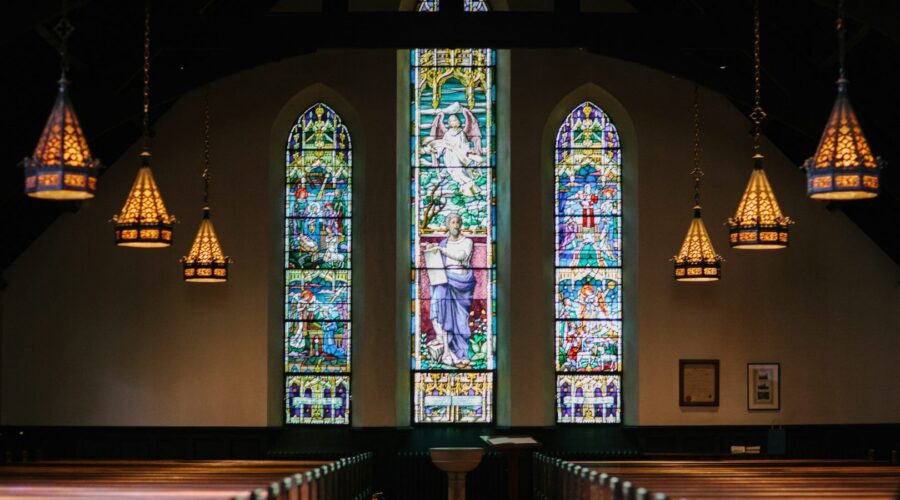
Discover Family Church: Nurturing Faith, Connecting Generations
Introduction
The family is the cornerstone of any society, and the church plays a vital role in shaping and supporting its members. A family church is a faith community where individuals of all ages come together to grow spiritually and build meaningful relationships.
Importance of Family Church
Nurturing Faith
- Provides a safe and loving environment for children to learn about God and Jesus.
- Encourages parents to model Christian values and pass on their faith to their children.
- Offers opportunities for families to worship and pray together, strengthening their spiritual bond.
Connecting Generations
- Brings together people of different ages, creating a multi-generational community.
- Fosters intergenerational relationships, fostering respect and understanding.
- Provides opportunities for grandparents, parents, and children to learn from and support each other.
Building Community
- Creates a sense of belonging and connection within the church.
- Provides support and encouragement for families during challenges.
- Encourages members to serve and reach out to the broader community.
Essential Elements of a Family Church
Family Worship
Regular worship services designed to engage and inspire people of all ages.
Children’s Ministry
Age-appropriate programs and activities that teach children about God and foster spiritual growth.
Youth Ministry
Programs that support teenagers in developing their faith and identity.
Parenting Support
Resources and support groups to help parents navigate the challenges and joys of raising children.
Grandparent Ministry
Programs that recognize and celebrate the role of grandparents in the family and church.
Benefits of Family Church
- Stronger family bonds
- Improved communication and relationships
- Increased faith and spirituality
- Enhanced community involvement
- Positive impact on children’s character development
Tips for Finding a Family Church
- Visit different churches and observe the worship services.
- Talk to the pastor and staff about their vision for the family.
- Inquire about the availability of children’s and youth programs.
- Consider the church’s demographics and whether it aligns with your family’s needs.
- Pray and seek God’s guidance in your decision.
Additional Resources
FamilyLife Ministries
Focus on the Family
Christianity Today: Family Ministries That Make a DifferenceConclusion
A family church is a treasure that nurtures spiritual growth, connects generations, and builds a supportive community. By embracing the essential elements of a family church, families can experience the transformative power of faith and build a strong foundation for the future.